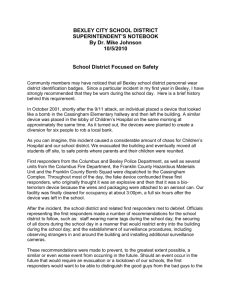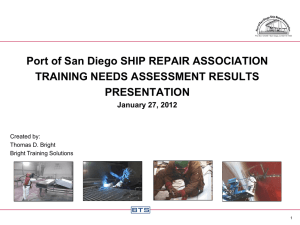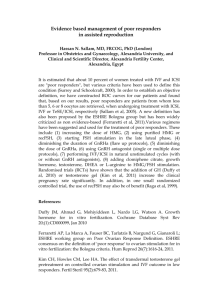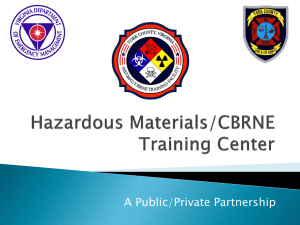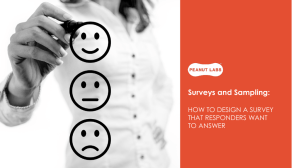Category Strategy Survey Questions Survey Narrative Results Fleet
advertisement
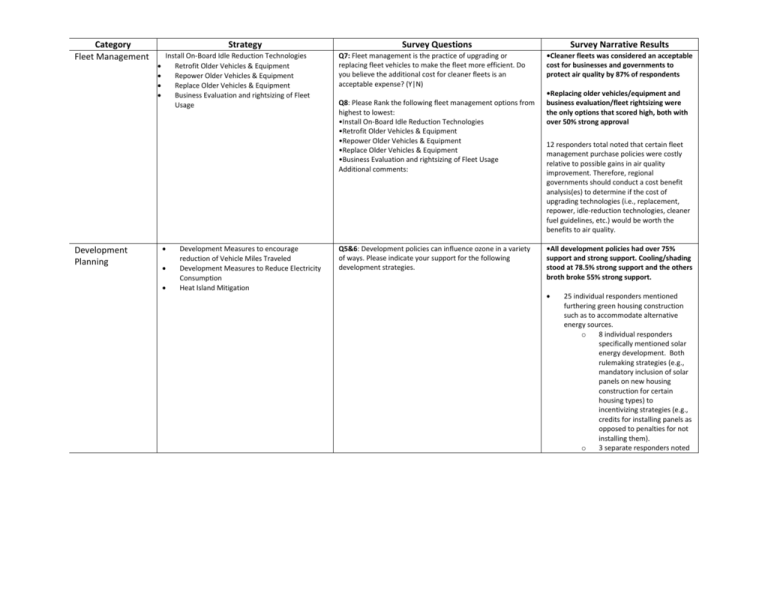
Category Fleet Management Development Planning Strategy Install On-Board Idle Reduction Technologies Retrofit Older Vehicles & Equipment Repower Older Vehicles & Equipment Replace Older Vehicles & Equipment Business Evaluation and rightsizing of Fleet Usage Development Measures to encourage reduction of Vehicle Miles Traveled Development Measures to Reduce Electricity Consumption Heat Island Mitigation Survey Questions Q7: Fleet management is the practice of upgrading or replacing fleet vehicles to make the fleet more efficient. Do you believe the additional cost for cleaner fleets is an acceptable expense? (Y|N) Q8: Please Rank the following fleet management options from highest to lowest: •Install On-Board Idle Reduction Technologies •Retrofit Older Vehicles & Equipment •Repower Older Vehicles & Equipment •Replace Older Vehicles & Equipment •Business Evaluation and rightsizing of Fleet Usage Additional comments: Q5&6: Development policies can influence ozone in a variety of ways. Please indicate your support for the following development strategies. Survey Narrative Results •Cleaner fleets was considered an acceptable cost for businesses and governments to protect air quality by 87% of respondents •Replacing older vehicles/equipment and business evaluation/fleet rightsizing were the only options that scored high, both with over 50% strong approval 12 responders total noted that certain fleet management purchase policies were costly relative to possible gains in air quality improvement. Therefore, regional governments should conduct a cost benefit analysis(es) to determine if the cost of upgrading technologies (i.e., replacement, repower, idle-reduction technologies, cleaner fuel guidelines, etc.) would be worth the benefits to air quality. •All development policies had over 75% support and strong support. Cooling/shading stood at 78.5% strong support and the others broth broke 55% strong support. 25 individual responders mentioned furthering green housing construction such as to accommodate alternative energy sources. o 8 individual responders specifically mentioned solar energy development. Both rulemaking strategies (e.g., mandatory inclusion of solar panels on new housing construction for certain housing types) to incentivizing strategies (e.g., credits for installing panels as opposed to penalties for not installing them). o 3 separate responders noted Outreach & Awareness Procurement Policy Ozone Action Day Programs Multimedia Public Education Program School curricula & education programs Local Green Business Leaders Certification Program Individual Pledges Business Outreach Program Promoting the Use of Commute Solutions Rideshare Program Q2: What is your level of awareness of air quality issues in our region? Tier 2, Bin 4 or better Light-Duty Vehicles CARB-Certified Low-NOX Idle Heavy Duty Vehicles Clean Contracting Policies Clean Fuel Specifications in Contracts Q10&11: Purchasing decisions can be used to achieve emissions reductions. Which of the following, if any, purchasing guidelines would you support for your local government? (1) Buying lower emissions vehicles (Y|N) (2) clean contracting guidelines (Y|N) or (3) buying local (Y|N)? Q3&4: Which of the following should be done to improve air quality awareness and reduce emissions in our region? the promotion of white roofing as a way to reduce “heat island” effects in highly developed areas, thus reducing the meteorological conditions that can lead to higher ozone 4 individual responders supported further development of public transportation •54% said they had a medium level of awareness of air quality issues. The only option to score less than 55% was collecting individual pledges. 30 individual responders mentioned improvements to public transportation in the region and creating a more extensive public transit network. This ranged from suggestions of retrofitting buses so that they run on electricity or natural gas to extending the existing Metrorail service to building new light rail infrastructure. 7 individual responders mentioned anti-idling policies as something they would support. The second most common suggestion was incentives for reducing commercial, public, and individual vehicle idling, though specific policy recommendations were absent. 5 responders promoted bike commuting by local employers 3 individual responders reported using funds for local air quality improvement for further education and awareness programs for residents and consumers in the area •All options presented to survey respondents received >60% strong support and ~90% support + strong support. 5 respondents didn’t make the Local Sourcing of Materials Comments: Regulation & Enforcement Modifications to Current Vehicle Inspection & Maintenance Program Enhanced Vehicle Inspection & Maintenance Program Enforcement Expansion Inspection & Maintenance Program Enhanced Vehicle Idling Enforcement & Restrictions Regulating Use of Unpermitted Combustion Equipment Open Burning Restrictions Special Event Policies Require Trip Reduction plans for companies with 100 or more employees Q12&13: Regulations with adequate enforcement represent opportunities to reduce emissions that contribute to our ozone problem.Which of the following regulatory/enforcement policies would you support? connection for why local purchasing would be effective (e.g.s., “what does local have to do with emission levels?” or ”It is important to buy local, but other manufacturers of low emissions products may need to be found elsewhere.”) 4 respondents were confused about the general nature of the question— assuming it referred to personal purchasing decisions as opposed to municipal purchasing decisions. 2 respondents supported a practice already in place within the City of Austin’s purchasing department, which is to consider the “cradle-to-grave” lifecycle of a piece of municipally-owned equipment as a formalized process prior to purchase of a particular piece of equipment. 6 individual respondents encouraged municipal purchasing departments to conduct cost-benefit analyses to determine the financial impact of city purchasing decisions. •All suggested regulations received over 49% strong support and over 80% support + strong support 3 common specific policy recommendations were suggested from this question. One concerned the regulation of gas-powered leaf blowers and lawnmowers in the region. These ranged from specific calls to outlaw said lawn equipment (3 responders) to other, more general calls to encourage electrical or mechanical powered equipment (i.e., rotary mowers), which were favored by 2 responders. The second issue concerned discouraging fraudulent car inspections at the municipal and regional level. 2 responders commented on the issue, with one respondent directly referenced SB 1350, a Senate Bill proposed by Sen. West, which never passed a vote in the other chamber. The specific reference to this bill involves Sec. 502.047 (relating to the enforcement of a centralized computer registration-based system for vehicle inspection). Another respondent referred more generally to the fact that fraudulent inspections are common and need to be curbed. Ride share, carpool and telecommuting policy incentives 6 respondents noted that ridesharing, telecommuting and carpooling need to be more common activities in the region. This ranges from the following “Discourage individual transportation, encourage public and co-op transportation” to “carpools for large employers” to suggestions that employers who receive tax incentives being required to have employee carpool programs. Reporting & Planning Small Source Reporting Requirements Non-Road Equipment Reporting Requirements Conducting Annual Emission Inventory of City/County Operations Q14&15: Emissions reporting and inventories are used to help policymakers analyze air quality trends. This is important because pollutants come from a variety of sources other than traffic which have effects on our air quality that are difficult to estimate. Would you support reporting requirements for small sources (Y|N) and/or non-road equipment (Y|N)? Do you believe municipalities should prioritize annual inventories of their operations (Y|N)? Comments: •Each measure received at least 60% support + strong support. Strong support ranged from low 30% to a high of 47% for reporting by government agencies. For question #14 in particular, only 17 respondents included written input. Of those respondents, three stated that they outright did not support having such requirements, citing that they would be too onerous and overbearing to businesses and governments alike. In addition to this, 4 more responders noted that that they did not understand the nature or intention of the question, noting that it contained too much jargon in the response options to be able to adequately understand the question. For question #15, 10 respondents voiced further confusion about the nature of the question. Of these, 2 respondents understood the scope of the question but were skeptical that it could accurately be measured. Example explanations for why include the assertion that the definition non-road pollutants are not “narrow enough” to get an accurate measure, as well as another responder who believed it would be easy to underestimate area emissions. For affirmative responses, there was no discernibly consistent response. Stationary Source Reductions Energy Efficiency and Renewable Energy Measures Resource Conservation Measures Power Plant NOX Controls Replacing Older Gas-Fueled Power Plants with Newer Gas-Fueled Power Plants Q16&17: Stationary sources of air pollution such as power plants represent a persistent challenge to air quality in our region. In addition to conserving electricity, another strategy for dealing with stationary sources is to make the electricity we generate cleaner. Which of the following, if any, would you support? Renewable Energy Measures (Y|N), Power Plant NOX Controls (Y|N), and/or Replacing Older Gas-Fueled Power Plants with Newer Gas-Fueled Power Plants (Y|N)? Comments: •Energy efficiency and renewables each scored ~85% and pollution controls and power plant replacement each scored ~75% 17 respondents offered support for solar energy development in the region. One individual suggested creating an option for a voluntary “community supported” common pool for specific businesses and individuals to utilize solar generated electricity. Three responders suggested tax incentives for businesses investing in solar energy. All in all, where specific actions were noted only, conversion to solar energy was supported more than investments in improving pollution controls for existing non-renewable fuel sources. Transportation Emission Reduction Measures Improvement of roadway performance Expanded and Improved Transit Commuter Trip Reduction Programs for CAC members Improved Non-Motorized Travel (Pedestrian/Bike) Facilities Transportation emission reduction measures are designed to reduce air pollution from on-road sources which represent the largest share of ozone emissions in our region. Please rank the following measures: 3 responders were concerned about the costs involved should a power plant be mandated to switch to a renewable energy source. 1 responder noted that, cost aside, the construction activity involved in converting a plant from fossil fuel-usage to renewable energy-usage could itself pose a risk to air quality in the short run. •All measures scored at least 80% support + strong support. 40 responders noted that public transportation networks aren’t sufficient enough to provide service to areas where the responders live in order for them to take advantage of it. This included residents in areas as diverse as West Travis County to Far South, Round Rock and east of Austin in areas such as Taylor. o 4 of the responders who expressed this could be classified as need-based riders as opposed to “choice” riders, in that they depend on the automobiles of friends and family and, in one case, are disabled. Their main issue with public transportation in the area was the inability to actually get to the bus stops themselves. Where alternative “off-peak” commuting was mentioned, responders noted that this was not an option for them, given the demands of their work schedule and inflexibility of their employers. -investing in infrastructure meant to provide you with an alternative to your car for getting to work and around town -expanded transit options -improvements meant to increase roadway performance -improved pedestrian and biking facilities Comments:
